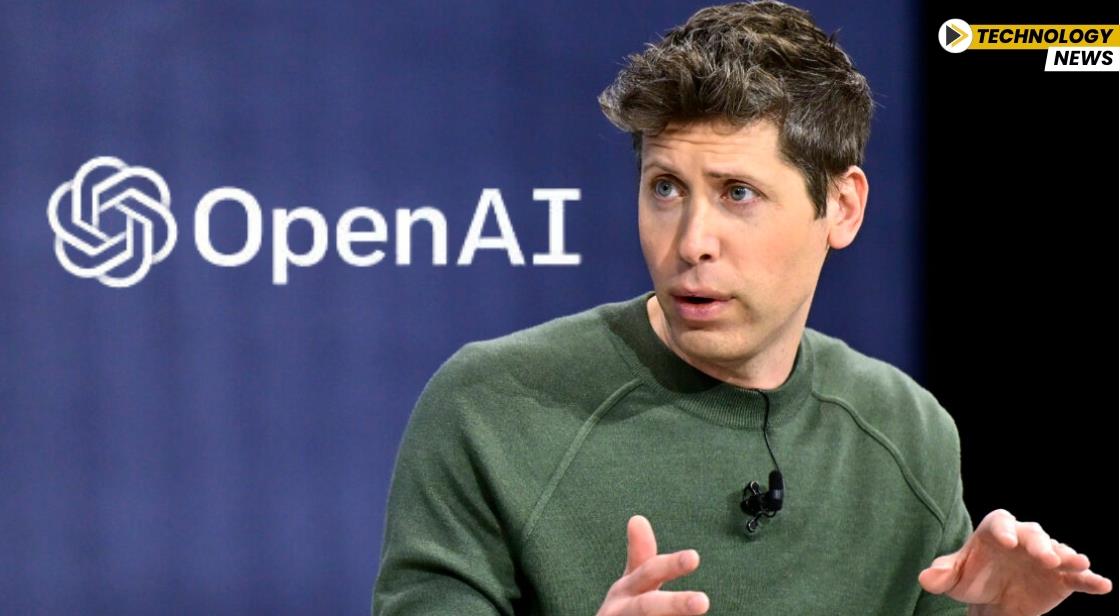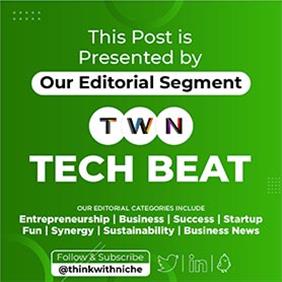OpenAI CEO Sam Altman Reveals Energy Use of a Single ChatGPT Query

News Synopsis
OpenAI CEO Sam Altman recently shared detailed insights into the energy usage of ChatGPT. According to him, a typical ChatGPT prompt consumes about 0.34 watt-hours of electricity and 0.000085 gallons of water, or as he puts it, "roughly one fifteenth of a teaspoon."
Everyday Comparison
In a blog post titled The Gentle Singularity, OpenAI CEO Sam Altman explained that this energy usage is comparable to "an oven running for just over one second" or "a high-efficiency lightbulb operating for a couple of minutes." These comparisons help contextualize ChatGPT’s energy footprint for users and policymakers alike.
Previous Projections and Clarifications
Earlier estimates had painted a different picture. A 2023 investigation by The Washington Post claimed that generating a 100-word response using GPT-4 could consume "a little more than one bottle" of water. However, usage varies depending on the data center's efficiency and location.
Altman on AI Infrastructure and Cost
Altman acknowledged the ongoing debate around AI’s sustainability. He said, "The economic value creation has started a flywheel of compounding infrastructure buildout to run these increasingly powerful AI systems." He also added that with greater automation in data center operations, "the cost of intelligence should eventually converge to near the cost of electricity."
Transparency and Future Regulations
This disclosure is part of OpenAI’s broader move toward transparency. With growing public and regulatory scrutiny around the environmental footprint of AI, these figures aim to build trust. Some researchers have even warned that AI could surpass Bitcoin mining in electricity consumption by the end of 2025.
Interestingly, Altman also revealed that the polite habits of users—saying “please” and “thank you” in their prompts—have cost the company tens of millions of dollars in electricity bills over time.
OpenAI History
OpenAI is an artificial intelligence (AI) research and deployment company that has rapidly become a leading force in the global AI landscape, most notably with the public launch of ChatGPT. Its history is characterized by an evolving mission, groundbreaking research, and a unique corporate structure designed to balance profit with the safe and beneficial development of artificial general intelligence (AGI).
1. Founding and Non-Profit Beginnings (2015-2018)
-
Formation (December 2015): OpenAI was founded in San Francisco in December 2015 as a non-profit research organization. The co-founders included Sam Altman, Elon Musk, Ilya Sutskever, Greg Brockman, Trevor Blackwell, Vicki Cheung, Andrej Karpathy, Durk Kingma, John Schulman, Pamela Vagata, and Wojciech Zaremba. Sam Altman and Elon Musk served as co-chairs.
-
Initial Mission: The stated mission of OpenAI was "to ensure that artificial general intelligence (AGI)—by which we mean highly autonomous systems that outperform humans at most economically valuable work—benefits all of humanity." The non-profit structure was intended to keep its early stages free from profit incentives and ensure that AGI would be developed safely and openly.
-
Initial Funding: The organization started with a significant commitment of $1 billion in pledged capital from individuals like Sam Altman, Greg Brockman, Elon Musk, Reid Hoffman, Jessica Livingston, Peter Thiel, and entities like Amazon Web Services (AWS), Infosys, and YC Research. However, the actual collected contributions until 2019 totaled much less, with verifiable donations from Musk amounting to less than $45 million, and Open Philanthropy contributing $30 million.
-
Early Research & Public Releases:
-
OpenAI Gym (April 2016): A public beta of "OpenAI Gym," a Python toolkit for reinforcement learning research, was released. This open-source platform allowed researchers to design and benchmark their algorithms.
-
OpenAI Universe (December 2016): This software platform aimed to measure and train an AI's general intelligence across various games, websites, and applications.
-
Dota 2 AI (2017-2018): OpenAI gained significant attention for its AI's performance in the video game Dota 2. Its "OpenAI Five" team of AIs eventually showcased the ability to compete and even win against professional human players, demonstrating impressive learning capabilities and strategic reasoning.
-
-
Elon Musk's Departure (2018): In 2018, Elon Musk resigned from OpenAI's board of directors, citing a potential conflict of interest with Tesla's own AI development for self-driving cars. Sam Altman later claimed that Musk believed OpenAI was falling behind and proposed to take over the organization, which the board rejected.
2. Transition to Capped-Profit and Microsoft Partnership (2019-2021)
-
Capped-Profit Model (2019): To attract substantial investment necessary for the immense computational power required to train large AI models, OpenAI transitioned to a unique "capped-profit" model in 2019. While legally a for-profit subsidiary (OpenAI Global LLC) controlled by the original non-profit (OpenAI Inc.), it placed a cap on investor returns. Any profits beyond this cap are to be returned to the non-profit for the benefit of humanity.
-
Microsoft Investment (2019): This strategic shift paved the way for a crucial partnership with Microsoft. In 2019, Microsoft invested $1 billion in OpenAI, becoming its preferred cloud provider (Azure) for training its advanced AI models. This partnership would deepen significantly in subsequent years.
-
Groundbreaking Language Models:
-
GPT-2 (February 2019): OpenAI announced GPT-2, a large language model capable of generating remarkably human-like text. Initially, OpenAI controversially chose to withhold the full version due to concerns about potential misuse, highlighting the emerging tension between open research and safety.
-
GPT-3 (2020): The release of GPT-3 demonstrated the immense potential of large language models, setting new benchmarks in natural language processing and generation. Its size and capabilities allowed for a wide range of applications.
-
-
DALL-E (2021) and Codex: OpenAI expanded into generative AI beyond text:
-
DALL-E (2021): This model generated images from textual descriptions, showcasing the power of AI in creative domains.
-
Codex (2021): A descendant of GPT-3, Codex was specifically designed to translate natural language into code, becoming the AI system powering GitHub Copilot.
-
3. The Generative AI Boom and ChatGPT (2022-Present)
-
ChatGPT (November 2022): The public launch of ChatGPT in November 2022 marked a watershed moment for generative AI. This conversational AI chatbot quickly became a global phenomenon, achieving 1 million users in just five days and the fastest-growing user base in history at the time. Its ability to generate coherent text, answer questions, write code, and more, brought AI directly into the public consciousness.
-
ChatGPT Plus and API Access: Following its massive success, OpenAI introduced a paid subscription service, ChatGPT Plus, offering priority access and faster responses. It also made its models available through an API, allowing developers and businesses to integrate OpenAI's advanced AI capabilities into their own applications.
-
GPT-4 (March 2023): OpenAI launched GPT-4, an even more advanced and multimodal large language model, capable of accepting both image and text inputs and exhibiting human-level performance on various professional and academic benchmarks.
-
Strategic Partnerships and Acquisitions (2024-2025): OpenAI has continued to forge significant partnerships:
-
Arizona State University (January 2024): Its first collaboration with a higher education institution, granting full access to ChatGPT Enterprise.
-
Reddit (May 2024): A partnership to offer new AI-powered tools for moderators and users and to license Reddit content for training.
-
News Corp (May 2024): A five-year licensing deal allowing OpenAI to use current and archived content from News Corp-owned publications.
-
Acquisitions (2025): OpenAI has been acquiring companies in 2025, including Context.ai (April 2025), Windsurf (May 2025), and iO (May 2025), expanding its capabilities and talent pool.
-
-
Leadership Turmoil (November 2023): OpenAI experienced a highly public and turbulent period in November 2023 when CEO Sam Altman was abruptly fired by the non-profit board. This led to widespread internal dissent, the resignation of key executives (including Greg Brockman), and ultimately, Altman's reinstatement as CEO within days, along with a reconstituted board. This event highlighted the unique governance structure and the tensions within the organization regarding safety, commercialization, and leadership. The new board structure, effective as of May 2025, now includes independent directors like Bret Taylor (Chair) and Larry Summers, with a non-voting observer from Microsoft.
-
Sora (2024): OpenAI unveiled Sora, a text-to-video generative AI model, demonstrating impressive capabilities in creating realistic and imaginative video scenes from simple text prompts.
-
GPT-4o (May 2024): OpenAI launched GPT-4o (omni), its new flagship model, capable of reasoning across audio, vision, and text in real-time. This model showcased enhanced multimodal capabilities, offering more natural human-AI interaction.
-
Revenue Growth (2024-2025): OpenAI has seen explosive revenue growth, reportedly surpassing $10 billion in annualized revenue as of June 2025, primarily driven by ChatGPT subscriptions and enterprise contracts through its Microsoft partnership. The company is now valued at over $300 billion, with a $40 billion Series F funding round completed in March 2025 led by SoftBank Group.
-
Focus on Safety and AGI: Despite its commercial success and rapid product launches, OpenAI reiterates its core mission: to ensure that artificial general intelligence (AGI) is developed safely and benefits all of humanity. It continues to invest in safety research and engages in discussions about the societal implications of increasingly powerful AI.
OpenAI's journey from a non-profit research lab to a commercial AI powerhouse has been swift and impactful, fundamentally reshaping the public's understanding and interaction with artificial intelligence.
Conclusion
As AI becomes increasingly integrated into everyday tools, understanding its environmental costs is vital. OpenAI’s disclosure highlights the company's commitment to sustainability and offers a foundation for discussions on energy efficiency, regulation, and innovation. With AI projected to become a major energy consumer, transparent reporting will play a key role in shaping public policy and perception.
You May Like









